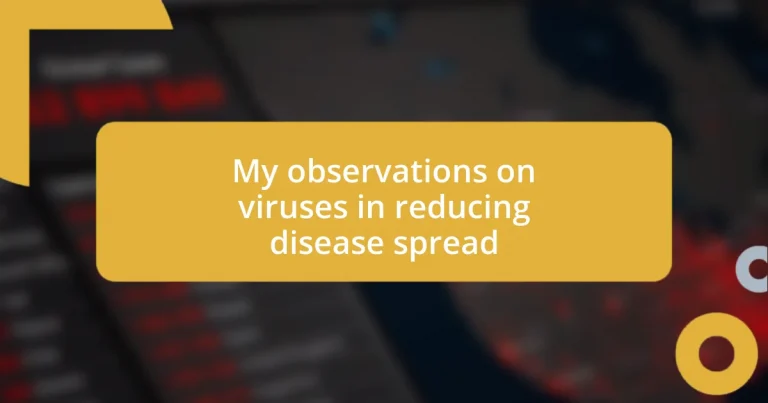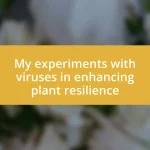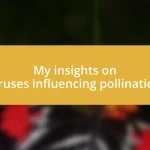Key takeaways:
- Understanding virus transmission methods, including respiratory droplets and surface contamination, is vital for disease prevention and informs public health strategies.
- Despite their harmful reputation, some viruses can have beneficial roles, such as in gene therapy or combating antibiotic-resistant bacteria through bacteriophage therapy.
- The future of virus management relies on technology, faster vaccine development, and global collaboration, emphasizing proactive measures to predict and mitigate outbreaks.
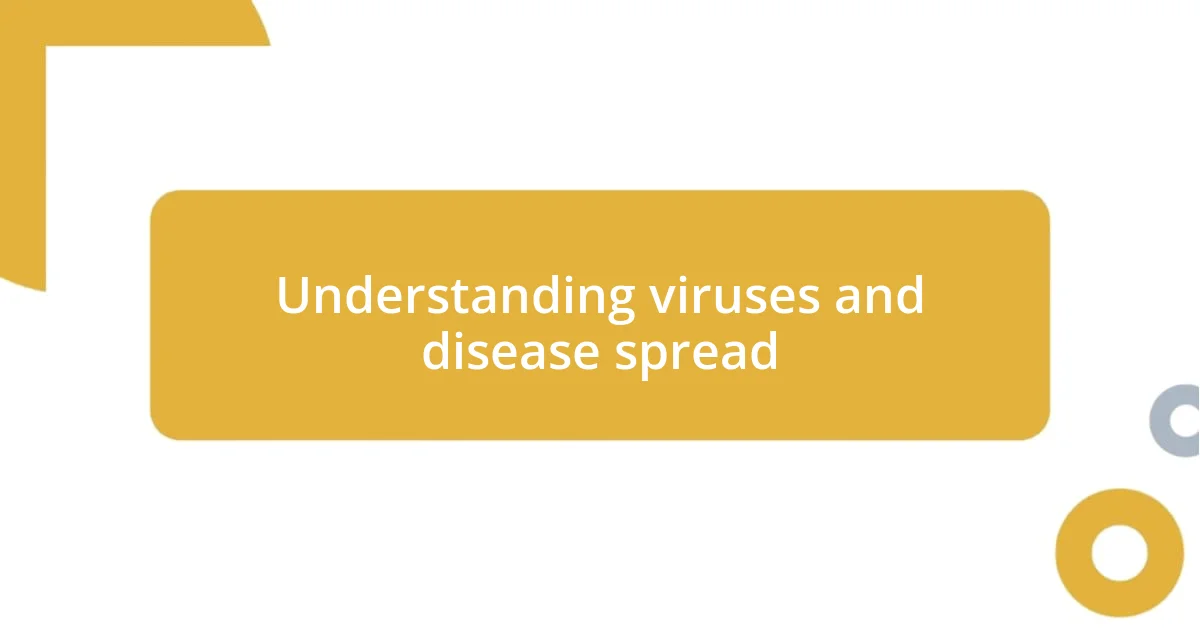
Understanding viruses and disease spread
Viruses are fascinating yet highly complex entities that can drastically affect disease spread. I remember the first time I learned about how tiny particles could wreak havoc on our immune systems. It made me question: How can something so small have such a significant impact on our health and communities?
Understanding how viruses are transmitted is crucial in managing outbreaks. Whether through respiratory droplets, surfaces, or direct contact, these pathways reveal the importance of hygiene and prevention. I can think back to those early days of the COVID-19 pandemic when we all became hyper-aware of our surroundings, which was both unsettling and enlightening.
Moreover, the role of asymptomatic carriers can complicate our understanding of disease transmission. It’s a perplexing reality—how can someone appear completely healthy yet be spreading a virus? This paradox often leaves us feeling anxious, but it also underscores the importance of public health measures like vaccination and social distancing. Reflecting on these dynamics helps me appreciate the delicate balance we must maintain to mitigate disease spread.
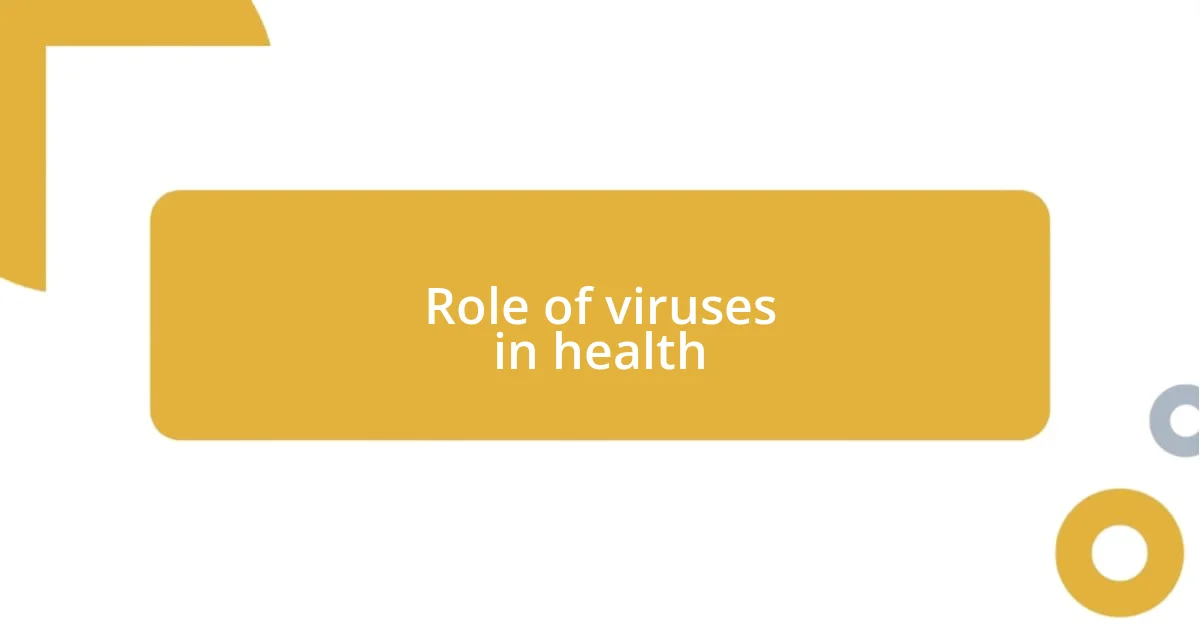
Role of viruses in health
The role of viruses in health is a double-edged sword. While their notorious reputation often leads us to view them solely as harmful agents, some viruses can have surprising benefits. For example, I remember taking part in a discussion about bacteriophages—the viruses that specifically target bacteria. It was eye-opening to learn that researchers are harnessing these tiny predators to combat antibiotic-resistant infections, offering a glimpse of hope in our battle against increasingly resilient pathogens.
- Viruses can play crucial roles in gene therapy, delivering genetic material to treat various diseases.
- Certain viruses help stimulate immune responses, potentially offering protective effects against other infections.
- Bacteriophages have become a promising alternative to antibiotics, providing a targeted approach to bacterial infections.
I’ve seen firsthand how awareness of these beneficial aspects can reshape our understanding of viruses during health crises. It feels empowering to realize that even in the face of adversity, nature often holds the keys to both disease prevention and treatment.
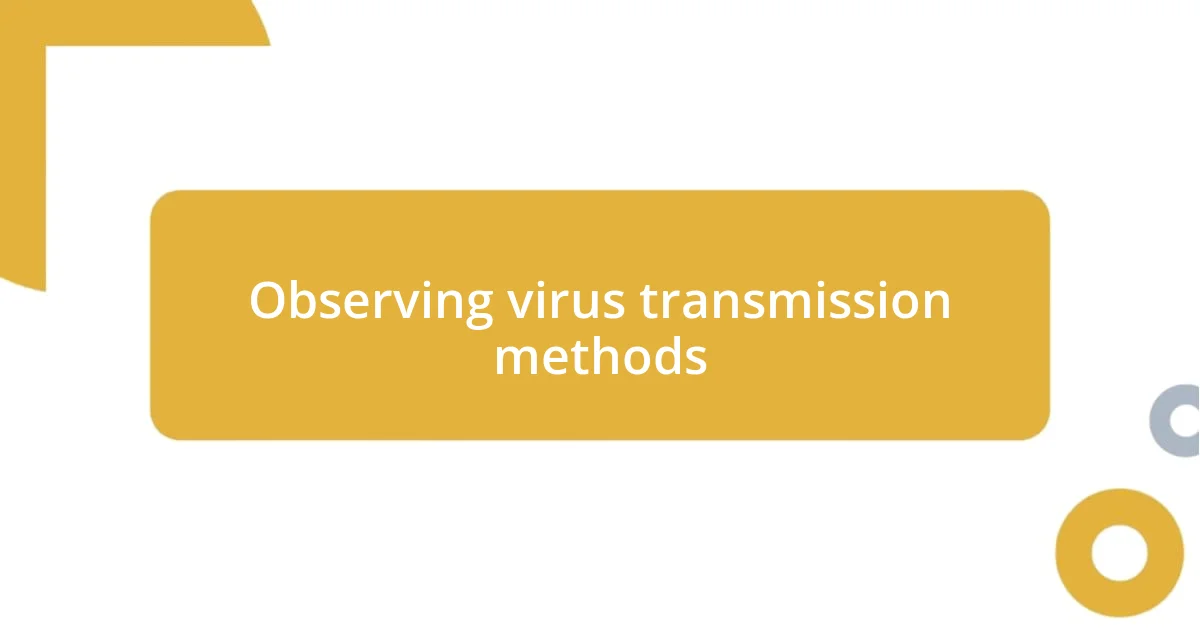
Observing virus transmission methods
Observing virus transmission methods is a fascinating yet vital area of study. I often find myself reflecting on how common activities, like shaking hands or hugging, can facilitate the spread of viruses. For instance, I recall a gathering where someone unknowingly brought a mild cold. Within days, a cascade of sneezes and sniffles erupted among our group. It’s clear that understanding these pathways guides us in modifying our behaviors to reduce transmission.
The primary transmission methods include respiratory droplets, contact with contaminated surfaces, and vector-borne routes. Each mode requires different preventive measures. For example, handwashing has become a ritual in my daily routine, especially upon returning home after being in public spaces. It’s interesting to think about how our habits shape our health and environment. Observing these methods in action helps me realize why awareness is the first step in disease prevention.
Another notable observation has to do with asymptomatic transmission—how someone can appear healthy yet still spread a virus. This yields a mix of confusion and concern in social settings. A personal experience I had was attending a friend’s birthday party where a few guests felt perfectly fine yet tested positive for the flu afterward. It left me pondering the invisible threats around us. Recognizing these complexities highlights the essential need for universal precautions.
| Transmission Method | Description |
|---|---|
| Respiratory Droplets | Spread through coughing, sneezing, or talking. |
| Surface Contamination | Touching surfaces contaminated with the virus. |
| Vector-borne | Transmission through insects or animals. |
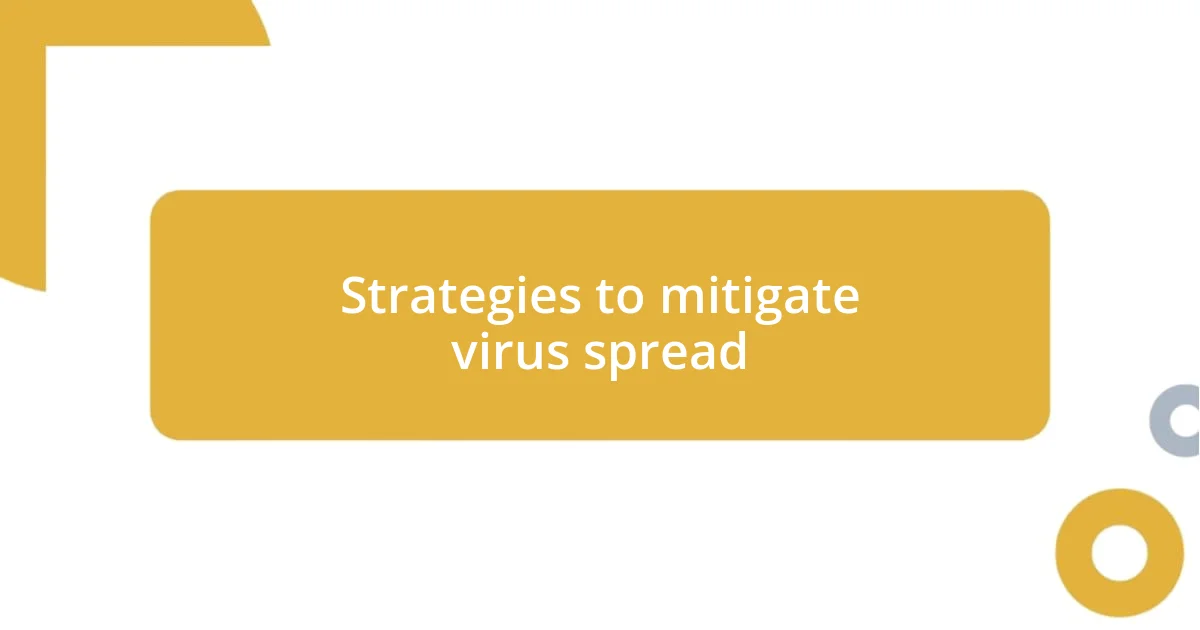
Strategies to mitigate virus spread
To effectively mitigate virus spread, I’ve found that simple changes in daily habits can make a significant difference. For example, during peak flu season, I started wearing a mask in crowded places, which felt strange at first but offered me peace of mind. It made me wonder—how many infections could be prevented if more people adopted this practice, even outside of pandemics?
Another method I’ve embraced is the regular practice of disinfecting high-touch surfaces in my home. Just the other day, I cleaned my doorknobs and light switches after reading about how long viruses can survive on surfaces. It was surprising to learn that a virus can linger for days in some cases. This habit not only protects me but also reassures my visitors, creating a shared sense of safety in my space.
Social distancing has also become a natural part of my lifestyle. I remember the first time I refrained from hugging a close friend at a gathering; it felt awkward, yet necessary. How often do we overlook the power of physical space in protecting ourselves and others? Reflecting on this, I realized these strategies not only safeguard our health but also promote a collective responsibility that can significantly lower the chances of an outbreak.
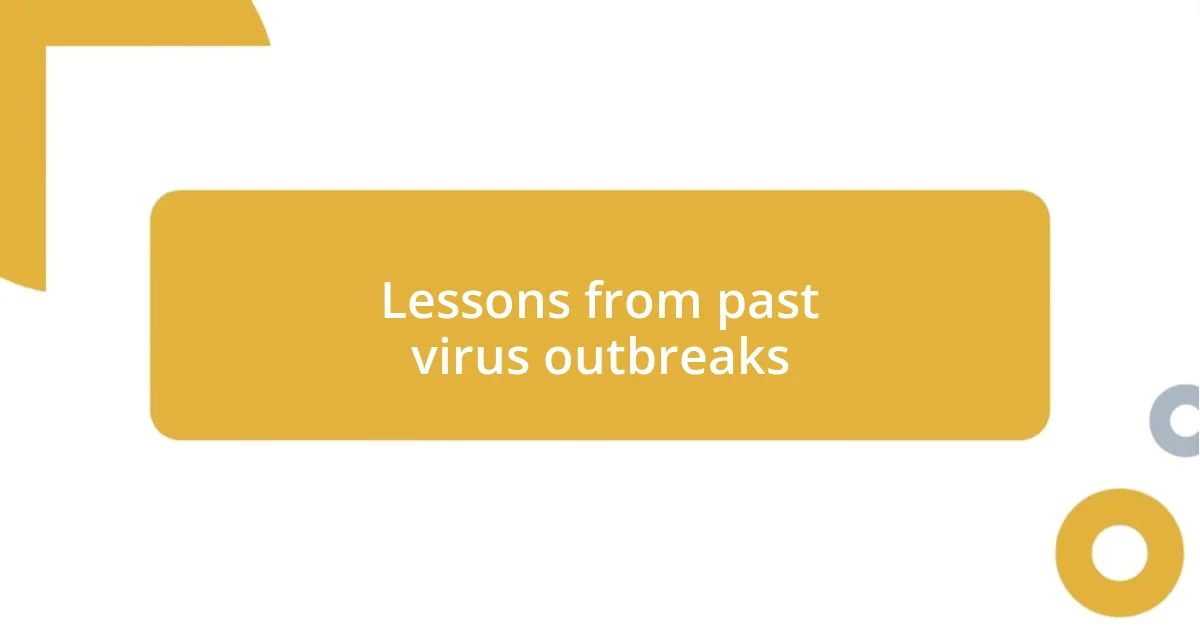
Lessons from past virus outbreaks
Looking back at past virus outbreaks, it’s astounding how certain lessons have shaped our understanding today. For instance, the 1918 influenza pandemic taught us the critical importance of communication in containment efforts. I remember reading about communities that had success by swiftly adopting public health messaging. It made me wonder—how many lives could be saved if we had taken that same approach during other outbreaks?
During the SARS outbreak in 2003, I was struck by the role that trust played in public health responses. In places where health authorities communicated openly and consistently, compliance with health measures significantly improved. Reflecting on my experiences in health crises, I recall being more vigilant when I felt informed. It struck me—transparency builds a bridge between experts and the public, which is essential for effective disease management.
Looking at more recent outbreaks, like Ebola or Zika, I’ve observed that addressing misinformation can’t be overlooked. Early in the Zika outbreak, I remember scrolling through social media and encountering a host of unfounded claims. This blend of fear and confusion can hinder prevention efforts. It left me contemplating how essential it is to counteract misinformation with clear, factual information. The past has shown us that knowledge, paired with community engagement, is our strongest weapon against the spread of diseases.
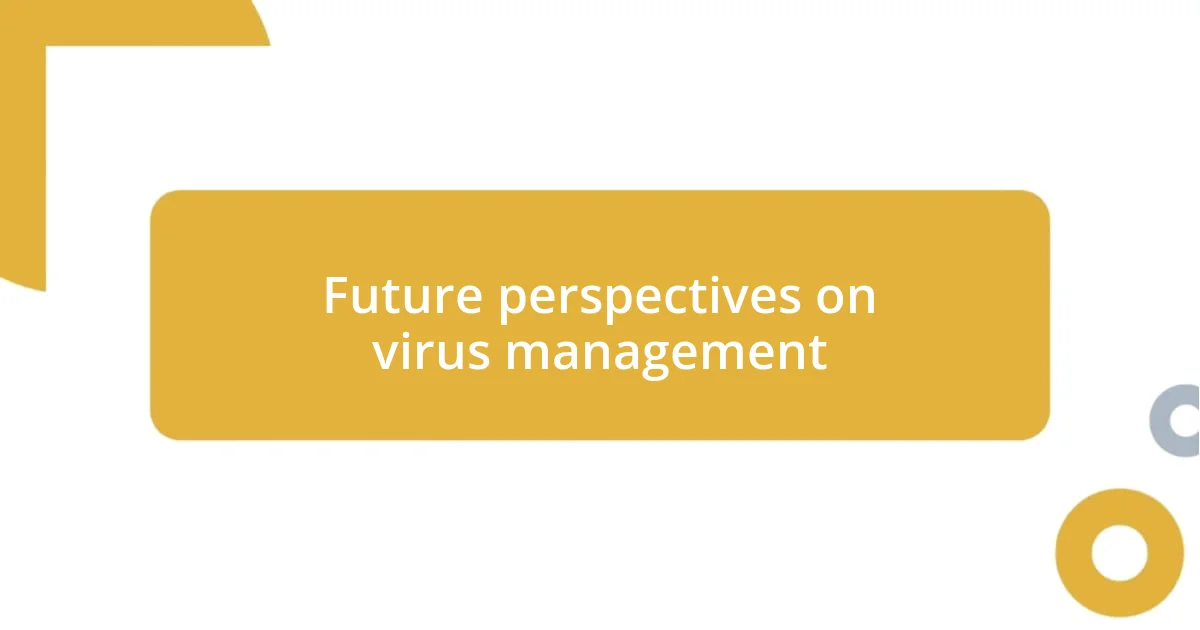
Future perspectives on virus management
Thinking about the future of virus management, I can’t help but feel optimistic about the role of technology. Imagine harnessing artificial intelligence to predict virus outbreaks before they even start. I find myself wondering—how transformative would it be if local health departments had tools that could analyze patterns and alert communities in real-time? The thought excites me because it emphasizes the proactive stance we could take, rather than simply reacting to an outbreak.
Another area I see potential in is vaccine development. My experience with vaccines has shown me how quickly science can adapt; just look at the development timeline for the COVID-19 vaccines. It has made me ponder—if we invest in platforms that allow quicker vaccine formulation, might we mitigate future threats more effectively? The speed at which we postulate and test new vaccines could redefine our entire approach to public health.
Lastly, I have observed the importance of global collaboration in managing viruses. Recently, I attended a seminar where health experts shared strategies across borders, and it struck me how interconnected our health systems truly are. This makes me question—can we cultivate a global network that shares data and resources seamlessly? A united front could significantly enhance our resilience against viruses, fostering a world where we are collectively prepared to tackle future challenges.












